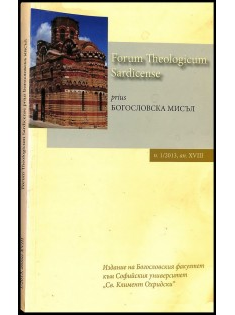Development of the Liturgy in the Urban Environment of Constantinople in Preiconoclastic Period
DOI:
https://doi.org/10.60061/fths.2013.1.145-172Keywords:
Constantinople, Byzantine Liturgy, Early Christianity, Byzantine Studies, LiturgicsAbstract
Alexander Georgiev, Development of the Liturgy in the Urban Environment of Constantinople in Preiconoclastic Period. Liturgical forms in Constantinople included imperial and church processions, which played a significant role in the social life of the time. The study of Byzantine urban liturgical processions is varied and extensive, each approach focusing on specific aspects. Key questions include: What was the relationship between the urban landscape, church architecture, and liturgy in the pre-iconoclastic period? Did the visual experience play an important role in the Byzantine stational liturgy within the urban and architectural environment of this period? What was the functional organization of the Byzantine church building in Constantinople, and how were its separate parts arranged according to liturgical planning as a key approach in the study of church architecture? Due to its exceptional value and popularity, the ritual of the liturgical procession was an integral part of Byzantine city life, starting from the legalization of Christianity by Emperor Constantine in 313 AD to the fall of Constantinople in 1453. The Church of St. Sophia occupied a central place in the stational liturgy process from the 5th to the 8th century in Constantinople.Downloads
Published
2025-05-23
Issue
Section
Статии
License
Copyright (c) 2013 Annual of St. Clеment of Ohrid University of Sofia – Faculty of Theology

This work is licensed under a Creative Commons Attribution-NonCommercial 4.0 International License.
How to Cite
Development of the Liturgy in the Urban Environment of Constantinople in Preiconoclastic Period. (2025). Forum Theologicum Sardicense, 1, 145-172. https://doi.org/10.60061/fths.2013.1.145-172


